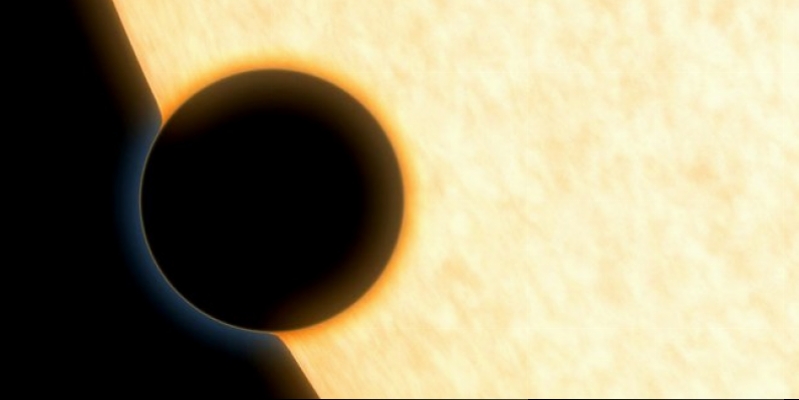Astronomers have announced the discovery of an important - they found a planet outside our solar system, where the sky is clear and there is water vapor in the atmosphere.
According to NASA, the planet, called HAT-P-11b is 120 light years away from us, the Swan (Cygnus) constellation. Invention of the authors used data from three NASA space telescope "Hubble, Spitzer and Kepler.
"This discovery - a significant step on the road toward ever held smaller, rocky planets such as Earth, atmospheric composition analysis. Such achievements are possible today only by combining the unique and powerful data provided by observatories "- said NASA space missions Directorate Assistant Administrator John Grunsfeld.
Search for exoplanets - not an easy task, even using the most advanced technologies and testing the composition of the atmosphere is even more of a challenge: scientists need to wait until the planet will fly between us and its star, to explore distant star light changes. If the shell plonučiame distant planet - the atmosphere - there is water, this is shown by the specific light absorption lines found weather.com.
Exoplanets with thick clouds
layers absorb light, so researchers need to light the star passes through the atmosphere on a clear distant planet - only then can explore the atmospheric gas composition.
HAT-P-11b is about the size of the planet Neptune. This - the lowest Extrasolar planet where, scientists were able to identify any molecules.
"Our work is carried out
is important for the future of the super-provinces and even smaller planets research, because we want to be able to pre-select the transparent planetary atmospheres, allowing us to identify molecules, "- said the study's co-author, California Institute of Technology researcher Heather Knutson.
Since the beginning of the search of exoplanets, scientists have identified 1,516 planets rotating around the sun .



